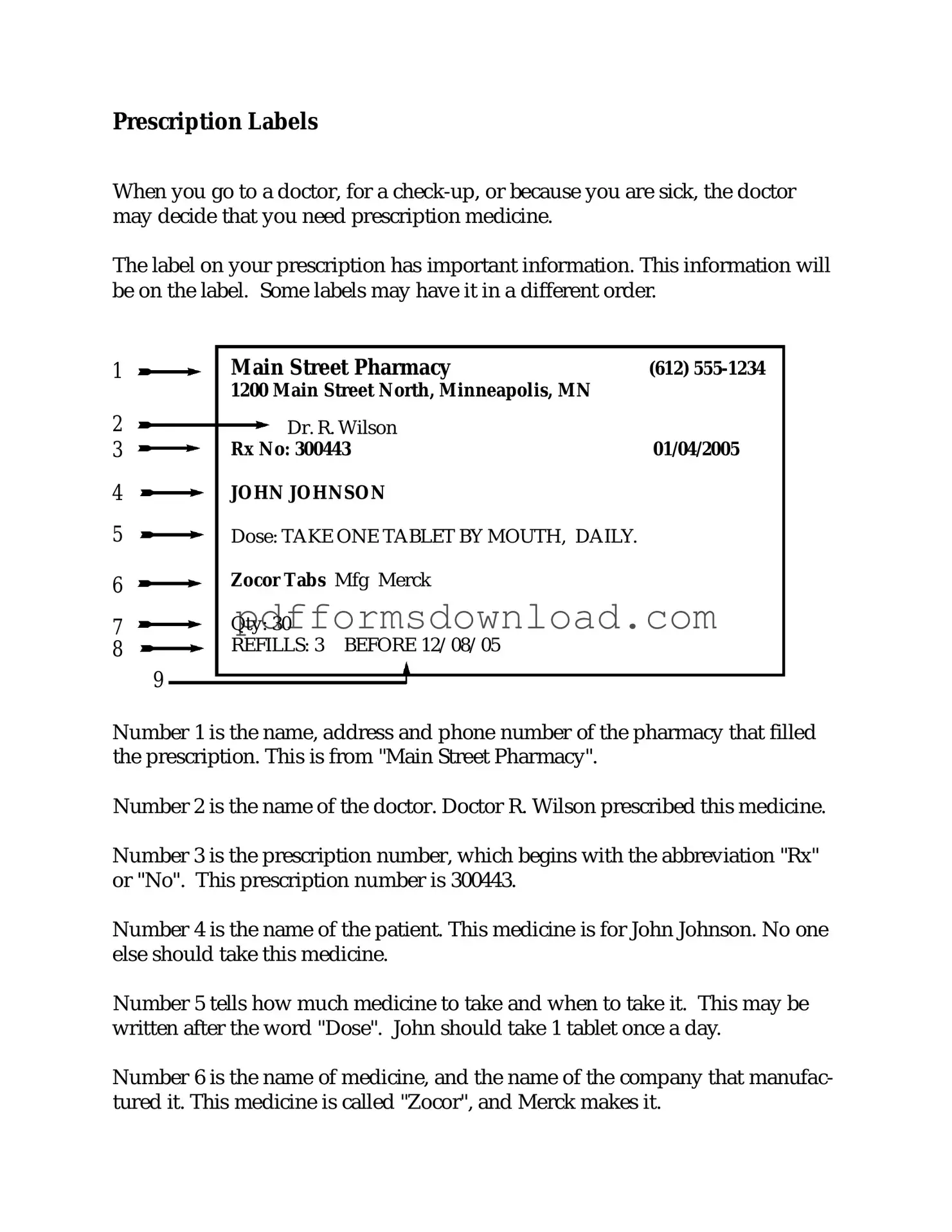What is the Prescription Label form?
The Prescription Label form is a document used to provide essential information about a medication. It includes details such as the patient's name, the prescribing doctor, medication dosage, and instructions for use. This form ensures that patients receive clear guidance on how to take their medications safely and effectively.
Who needs to fill out the Prescription Label form?
Typically, healthcare providers, such as doctors or pharmacists, complete the Prescription Label form. However, patients may also need to review the information to ensure accuracy and understand their medication regimen. It is important for both parties to confirm that all details are correct before the medication is dispensed.
What information is required on the Prescription Label form?
The form should include the patient's full name, the medication name, dosage instructions, the prescribing physician's information, and any special instructions for use. Additionally, the form may contain warnings about potential side effects or interactions with other medications.
How is the Prescription Label form used?
Once completed, the Prescription Label form is attached to the medication packaging. This label serves as a guide for patients on how to take their medication. It is crucial for ensuring adherence to the prescribed treatment plan and helps prevent medication errors.
Can I request changes to the Prescription Label form?
Yes, patients can request changes if they notice any inaccuracies or if their healthcare provider deems it necessary. It is advisable to communicate any concerns directly to the prescribing physician or pharmacist to ensure that the label reflects the correct information.
What should I do if I lose my Prescription Label form?
If the Prescription Label form is lost, it is important to contact your healthcare provider or pharmacist as soon as possible. They can provide a replacement form and ensure that you have the correct information regarding your medication. Keeping a copy of the label in a safe place is recommended for future reference.
Are there any legal implications associated with the Prescription Label form?
Yes, the Prescription Label form holds legal significance. It serves as a record of the medication prescribed and can be used in case of disputes regarding medication errors or adverse effects. Both healthcare providers and patients should keep copies for their records.
How can I ensure that my Prescription Label form is accurate?
To ensure accuracy, review the form carefully before leaving the pharmacy. Verify that your name, medication name, dosage, and instructions are correct. If any discrepancies are found, address them immediately with the pharmacist or healthcare provider. Regular communication with your healthcare team can also help maintain accurate records.
